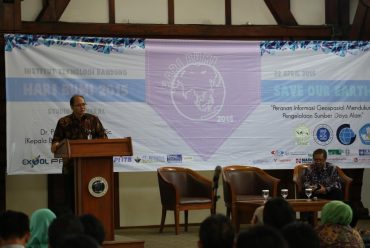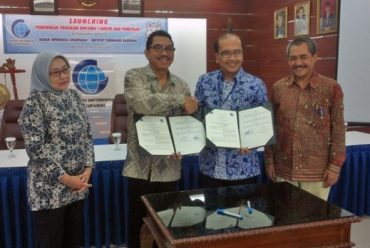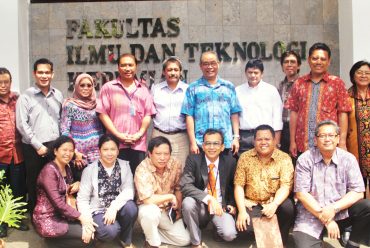Learning from Situ Gintung
By Imam A. Sadisun
AIS or in more general terms, also known as the lakes are relatively small, can form naturally or artificially. These lakes get a good water supply from rainfall, springs, or rivers that are in the vicinity. Some of it has the outlet (outlet) which can sometimes also be naturally occurring or an artificial construction, by building small dams or levees.
Situ Gintung in the Cirendeu, Tangerang, Banten, was originally a naturally occurring situ. In situ dike was built since the days of the Dutch East Indies colonial administration, namely in 1933 (Detik.com, 27/3). Based on the Geological Map Sheet Jakarta and the Thousand Islands made Turkandi et al. (1992), Situ Gintung currently on volcanic sedimentary rock units.
Based on the type of material, massive dam in the form of a relatively homogeneous land fill (earth dam). In general, this type of dike consists of one type of impermeable compacted soil, which should be equipped with the system drained horizontal (horizontal drain) or flue (chimney drain). Drained system is an important part in the construction of dikes, mainly serves to lower the line of seepage flow in the body of the embankment.
Embankment instability caused by various factors, which may play a role in isolation or in combination. One factor is the subsurface erosion in the downstream embankment or reed erosion (piping erosion). Cohesive soils generally the result of weathering of volcanic sediment, are prone to this process. Erosion is sometimes preceded by a rift in the downstream embankment slopes, followed by the collapse of the embankment body. The collapse of the embankment body can also be affected possibility of damage below ground (subsoil) due to erosion reed.
Danger due to the collapse of the embankment, will be exacerbated if the conditions puddle there is too high (overtopping) or even melimpas embankment. Moreover, abundant water volume would certainly be a greater threat, after a dike collapsed.
Those things are very likely to occur in massive dam, which resulted in the breakdown of body embankment, Friday (27/3) morning. Before the levees collapsed, many of which reported the existence of cracks in the dike body. Most likely, this is related to the processes of erosion and decreased partially reed dam body.
Torrential rains that occurred a few days before the burst of massive dam, a major cause of the increase in the puddle there. Situ with inundation area is estimated at 21 hectares and with a volume of up to 1.5 million cubic meters, has been spewing much of its contents, after a dam burst. Nothing wrong if many victims of the disaster, which claimed the flash flood is like a small tsunami. Morphology, surface uneven ground at the downstream, greatly affects his run flash floods and also spread.
The monitoring system
With old age, should Situ Gintung get enough attention. Not only limited capacity factor and the quality of the water that fills it, but relating to the stability berms body. Moreover, Situ Gintung this is one alternative tourist destination not far from the state capital, the security to the tourists must be given.
Security embankments should always be evaluated. The potential collapse of the embankment body, should be identified early. Prevention efforts are very important and the slightest symptom of the possibility of collapse incident, the body of the dike must always be taken into account. Another method that is quite important, namely monitoring or monitoring.
Learning from Situ Gintung, these disasters seem totally unexpected happened. Although some residents find indications of instability embankment, but the act of preparedness does not terancang and well organized. That need attention here is the presence of Situ Gintung incident, people in different regions of the country staying around the dike or dam (particularly located in the lower part), began to fret. Whether this will be allowed to continue taking place? ***
Writer, Member of the Scientific Group of Applied Geology, FITB – ITB and Head of the Division of Engineering Geology – IAGI.
Source: http://newspaper.pikiran-rakyat.com/prprint.php?mib=beritadetail&id=66804







No Comments